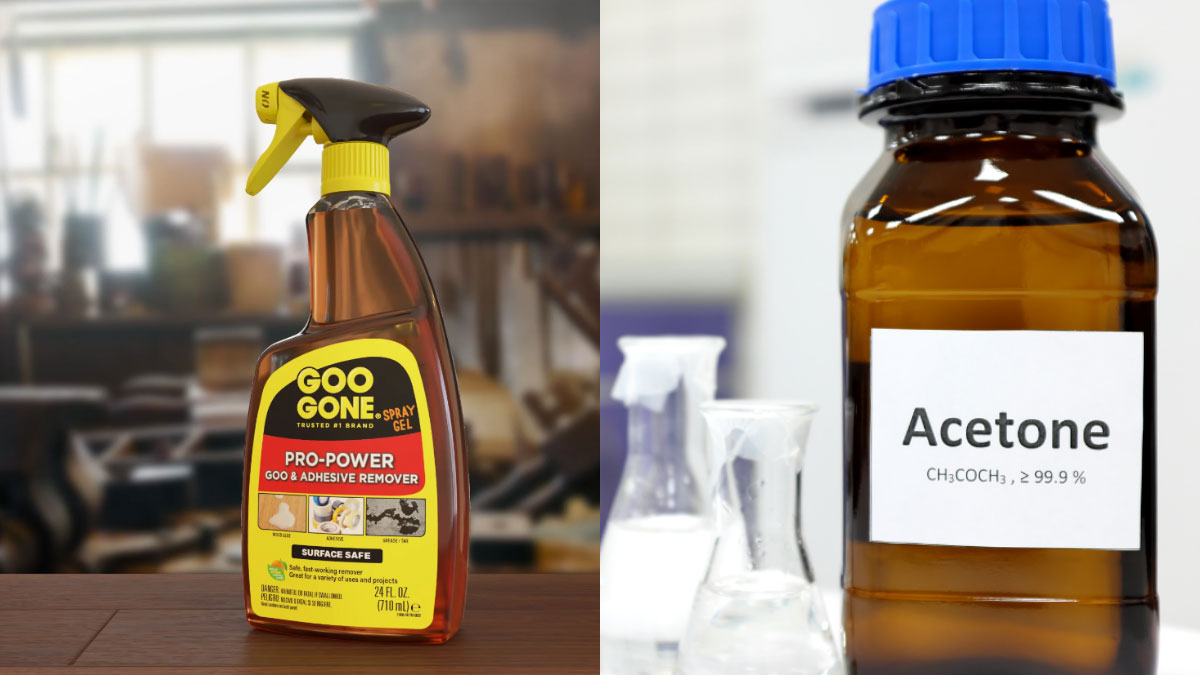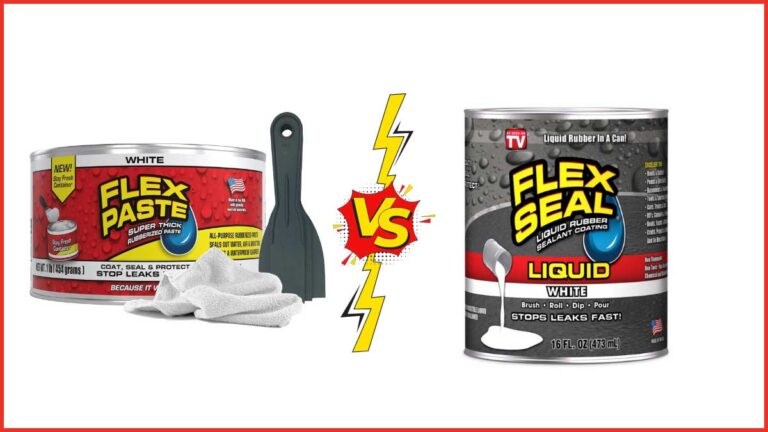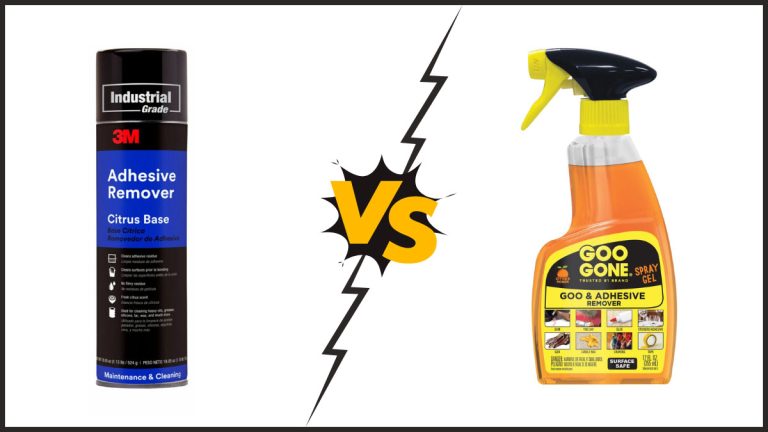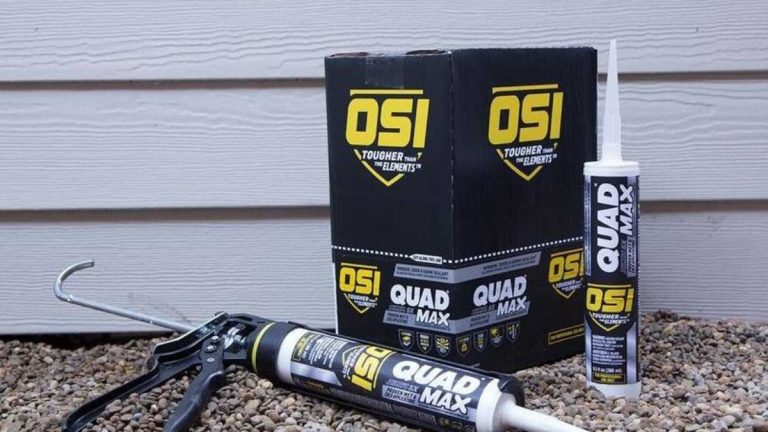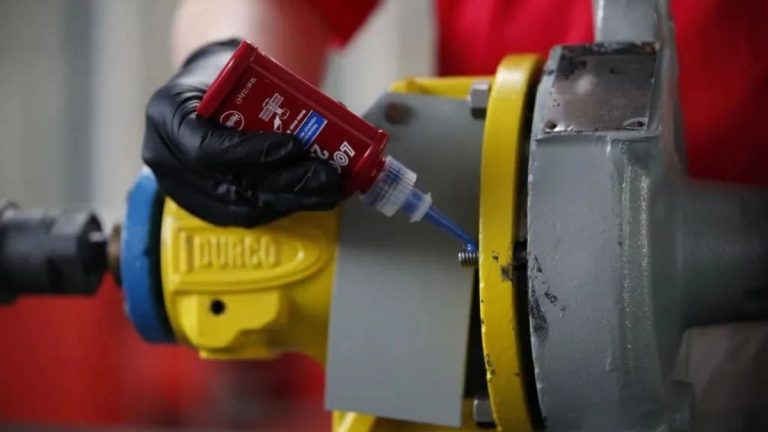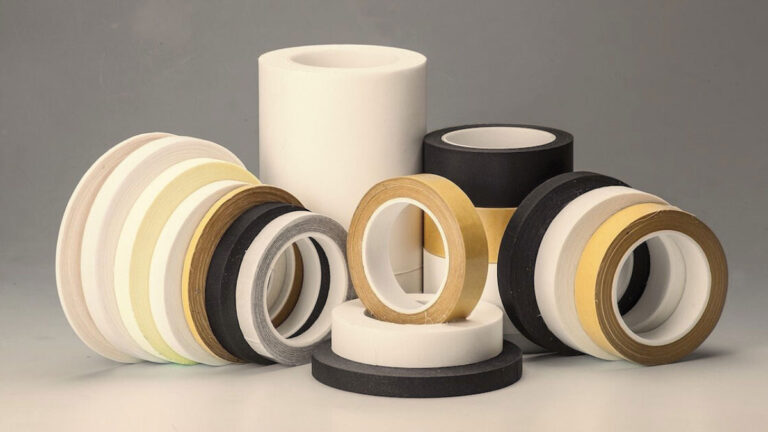Goo Gone vs Acetone: Which is Best for Removing Stubborn Residues?
When it comes to tackling stubborn sticky residues or tough stains, you’ve likely come across two popular solutions: Goo Gone and acetone. Both products promise to make your cleaning tasks easier, but they have distinct differences that can impact their effectiveness depending on the job at hand.
Understanding the strengths and limitations of Goo Gone and acetone can help you choose the right tool for your specific needs. Whether you’re dealing with adhesive residue, paint spills, or greasy messes, knowing which product to reach for can save you time and effort. Let’s jump into what sets these two cleaning powerhouses apart.
Key Takeaways
- Composition Differences: Goo Gone is a mild, citrus-based solvent, making it less harsh and more pleasant to use, while acetone is a potent organic solvent known for its strong, pungent odor and effectiveness.
- Usage and Applications: Goo Gone is ideal for removing adhesive residues from various surfaces like painted walls, glass, and fabric. Acetone excels in removing tougher substances like paint and super glue but can damage delicate surfaces.
- Safety and Toxicity: Goo Gone has low toxicity and is generally safer for household use; it requires minimal ventilation. Acetone, with higher toxicity and flammability, needs extensive precautions including proper ventilation and protective gear.
- Impact on Surfaces: Goo Gone is safe on most surfaces such as plastics, glass, and finished wood. Acetone is more aggressive and may cause damage to plastics, fabrics, and painted areas.
- Ease of Use: Goo Gone is easy to apply and manage, leaving a mild citrus scent. Acetone evaporates quickly without residue but requires careful handling due to its aggressive nature.
- Health and Environmental Considerations: Both Goo Gone and acetone carry risks including respiratory and skin irritation. Proper ventilation and protective equipment are essential when using either product.
Key Differences Between Goo Gone And Acetone
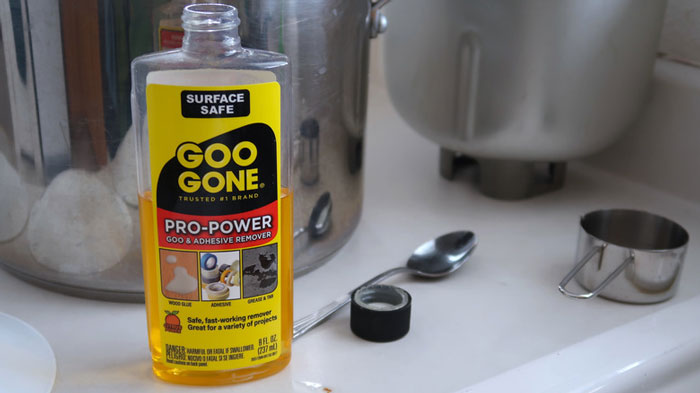
Composition And Ingredients
- Goo Gone: Goo Gone is a mild, citrus-based solvent. Less chemically harsh than acetone, it has a pleasant citrus scent. Its active ingredients include petroleum distillates, d-limonene, and various surfactants. This blend makes it effective at dissolving adhesives while being gentle on most surfaces.
- Acetone: Acetone is a potent organic solvent frequently found in nail polish removers and paint thinners. It has a strong, pungent odor and lacks the citrus fragrance of Goo Gone. As a strong chemical liquid, acetone is very effective at breaking down tough substances like paint and strong adhesives.
Usage And Applications
- Goo Gone: Ideal for removing adhesive residue from stickers, tape, and general household messes. Effective on finished wood, sealed stone, painted surfaces, glass, fabric, metals, plastics, and ceramic/porcelain. But, avoid using it on unfinished wood as it can cause discoloration.
Applications:
- Removing sticker residue from glass jars
- Cleaning crayon marks off painted walls
- Dissolving gum from fabric
- Acetone: Better suited for tougher messes like paint, tar, oil, and strong glues. Works well on materials such as wood and metal but can damage painted surfaces.
Applications:
- Stripping paint from furniture
- Cleaning tar off construction tools
- Dissolving super glue from metal surfaces
Safety And Toxicity
Goo Gone:
- Safety: Generally safer for household use. Always test on an inconspicuous area first.
- Toxicity: Low toxicity levels make it less hazardous. Ensure adequate ventilation during use.
Acetone:
- Safety: Highly flammable and should be handled with care. Use gloves to protect your skin.
- Toxicity: Higher toxicity levels. Prolonged exposure to fumes can cause respiratory irritation, and there is a risk of skin dryness or cracking with repeated contact.
Comparison Table
| Feature | Goo Gone | Acetone |
|---|---|---|
| Composition | Citrus-based, petroleum distillates, d-Limonene, surfactants | Potent organic solvent |
| Scent | Pleasant citrus | Strong, pungent |
| Surfaces | Finished wood, sealed stone, painted surfaces, glass, fabric, metals, plastics, ceramic/porcelain | Wood, metal, non-painted surfaces |
| Toxicity | Low | High |
| Flammability | Low | High |
Summary/Action Point
Understanding the differences between Goo Gone and acetone helps you choose the right product for your specific cleaning tasks. Always consider the materials and surfaces you’ll be working with and prioritize safety by following guidelines for each product.
Effectiveness In Removing Adhesives
Selecting the right solvent for removing adhesives can greatly impact your cleaning outcomes. Both Goo Gone and acetone have distinct properties. Understanding these differences helps you choose the best option for your specific needs.
Stickers And Labels
Goo Gone
Goo Gone’s formulation includes petroleum distillates, which make it effective for removing stickers and labels. While it works well on most household surfaces, it might leave a slight residue. This residue could require additional cleaning, especially before painting the treated area. Users often appreciate its citrus scent, which makes it more pleasant to work with compared to harsher chemicals.
Acetone
Acetone excels in removing stickers and labels because it evaporates without leaving any residue. Its potency ensures that even stubborn adhesives break down easily. You should proceed with caution on delicate surfaces such as painted or varnished items since acetone’s aggressive nature could cause damage. Professional settings often opt for acetone due to its efficiency and residue-free finish.
Glue And Tape Residue
Goo Gone
Goo Gone performs reasonably well in removing glue and tape residue. Its mild formulation is less likely to harm surfaces, making it suitable for use on a variety of household items. But, users often note that it may not be as effective on very stubborn glue spots or tough industrial tapes. Multiple applications might be necessary for complete removal.
Acetone
Acetone is highly effective for dissolving glue and tape residue quickly. Its ability to evaporate cleanly means there’s no need for additional cleanup. But, its strong solvent properties can be too harsh for some materials, such as plastics and finished wood surfaces. If you’re using acetone, thorough testing on a small inconspicuous area first is crucial.
| Feature | Goo Gone | Acetone |
|---|---|---|
| Composition | Petroleum distillates | Organic solvent |
| Residue | May leave residue | Leaves no residue |
| Surface Compatibility | Safe on most surfaces | Can damage delicate surfaces |
| Effectiveness | Moderate on tough adhesives | Highly effective |
| Safety | Low toxicity, pleasant scent | High flammability, strong odor |
Choosing between Goo Gone and acetone depends on your specific cleaning task. For household use on varied surfaces, Goo Gone offers a safer, albeit sometimes less effective, option. For professional-grade cleaning where residue-free performance is essential, acetone stands out, albeit with increased risk to some surfaces. Always prioritize safety by utilizing the correct protective equipment and testing on small areas first.
Impact On Different Surfaces
Understanding the impact of Goo Gone and acetone on various surfaces ensures you choose the correct solvent for your cleaning needs. Each product has strengths and limitations depending on the material. Below, you’ll find specifics for plastic, glass, fabric, and upholstery, as well as metal and wood surfaces.
Plastic and Glass
Plastic:
- Goo Gone: Safe for most plastics. Minimizes risk of damage or dissolution.
- Acetone: Aggressive on plastics, often causing dissolution or discoloration.
Glass:
- Goo Gone: Gentle and effective on glass. Leaves minimal residue.
- Acetone: Safe for glass, effective at removing tough residues but may leave a strong odor.
Fabric and Upholstery
Fabric:
- Goo Gone: May leave residues. Test on a small, inconspicuous area first.
- Acetone: Not recommended for fabric, risks damaging or discoloring it.
Upholstery:
- Goo Gone: Use cautiously, potential for damage. Test before extensive use.
- Acetone: Avoid due to high volatility and risk of damage.
Metal and Wood
Metal:
- Goo Gone: Effective and safe on metal. Great for removing adhesives without damaging the surface.
- Acetone: Also effective, quickly dissolves residues. Use in a well-ventilated area.
- Goo Gone: Generally safe, but test on finished wood to avoid potential damage.
- Acetone: High risk of stripping paint or finish. Use with extreme caution.
| Surface | Goo Gone | Acetone |
|---|---|---|
| Plastic | Safe for most, minimal risk of damage | Often causes damage or discoloration |
| Glass | Gentle and effective, minimal residue | Effective but strong odor |
| Fabric | May leave residues, test small area first | Not recommended, risks damage |
| Upholstery | Use cautiously, test first | Avoid, high risk of damage |
| Metal | Safe and effective, great for adhesives | Effective, needs ventilation |
| Wood | Generally safe, test on finished wood | High risk of paint/finish stripping |
Selecting either Goo Gone or acetone depends heavily on the surface involved. Refer to the table for a quick comparison to ensure you use the appropriate product for your cleaning tasks.
Ease Of Use And Application Methods
Comparing the ease of use and application methods of Goo Gone and acetone is crucial for selecting the right cleaner. Both have specific techniques to ensure effective and safe usage.
Goo Gone Application Techniques
Ease of Use:
Goo Gone is less aggressive and safer for most surfaces. It’s primarily citrus-based, containing limonene, which minimizes the risk of damage to paint or plastics.
Application Methods:
- Apply Directly: Use a cloth or paper towel to apply Goo Gone directly to the adhesive residue.
- Let It Sit: Allow it to sit for a few minutes, letting the solvent penetrate the adhesive.
- Wipe Off: Wipe off the residue with a clean cloth or paper towel. Repeat if necessary.
Acetone Application Techniques
Ease of Use:
Acetone is more aggressive and demands caution. It evaporates quickly and can damage surfaces like paint, plastics, and wood.
Application Methods:
- Apply Carefully: Use a cloth or cotton swab to apply acetone to the adhesive residue to avoid overspray.
- Quick Action: Work quickly to remove the adhesive before the acetone evaporates.
- Ventilation: Ensure proper ventilation due to the strong odor of acetone.
| Aspect | Goo Gone | Acetone |
|---|---|---|
| Base Composition | Citrus-based (limonene) | Organic solvent |
| Surface Safety | Safe on paint, plastics | Potential damage to paint, plastics |
| Evaporation Rate | Slow | Fast |
| Odor | Mild, citrus | Strong, chemical |
| Flammability | Low | High |
| Ventilation Needed | Minimal | Essential |
| Ease of Application | Easy to apply and manage | Requires careful application |
| Residue | May leave slight residue | Leaves no residue |
Use this comparative insight to optimize cleaning tasks, ensuring you choose the right product for the specific surfaces and residues involved.
Pros And Cons
Advantages Of Goo Gone
- Surface Safety: Goo Gone is generally safer for use on various surfaces, including carpet, finished wood, sealed stone, painted surfaces, glass, fabric, metals, plastics, and ceramic. Due to its mild formula, you can use it without worrying about causing significant damage.
- Gentle Cleaning: Goo Gone provides a gentler cleaning process, making it perfect for light-duty adhesive removal projects. It effectively removes sticky residue, gum, crayon, and glue without causing damage to surfaces.
- Citrus-Based Formula: Goo Gone’s citrus-based formula leaves a fresh scent and is environmentally friendlier compared to acetone. The citrus content also tends to be less harsh on surfaces.
- Versatility: Goo Gone offers various formulas, such as Original, Latex Paint Clean Up, Pro Power, and Automotive Spray Gel. These variations make it versatile for different cleaning needs, from removing latex paint to handling automotive grime.
Disadvantages Of Goo Gone
- Residue: Goo Gone may leave a slight residue that necessitates further cleaning. This can be an inconvenience, especially if you’re aiming for a spotless finish on surfaces.
- Limited Strength: While Goo Gone is effective for light-duty tasks, its gentle formulation might not suffice for tougher cleaning jobs. You might find it less effective against strong adhesives or deep-seated stains.
- Availability: Goo Gone products may not be available at all retail stores, potentially requiring you to order online, leading to delays in project completion.
Advantages Of Acetone
- Powerful Solvent: Acetone is a strong organic solvent that effectively breaks down tougher substances, such as paint and strong adhesives. It excels in removing nail polish, epoxy, and other resilient materials.
- No Residue: Acetone evaporates quickly, leaving no residue behind. This feature ensures a clean, spotless finish on surfaces, making it ideal for tasks requiring zero leftover marks.
- Availability: Acetone is widely available in hardware stores, pharmacies, and even some supermarkets, making it easy to procure whenever needed.
Disadvantages Of Acetone
- Surface Damage Risk: Acetone’s aggressive nature makes it unsuitable for delicate surfaces like plastics, fabrics, and painted areas. Using it inappropriately could lead to significant damage.
- Toxicity: Acetone is highly flammable and poses higher toxicity risks compared to Goo Gone. Proper ventilation, protective gloves, and eye protection are crucial when using acetone to mitigate health risks.
- Odor: Acetone has a strong, pungent odor, which can be unpleasant during use. Adequate ventilation is necessary to minimize exposure to its fumes.
| Feature | Goo Gone | Acetone |
|---|---|---|
| Surface Safety | Safe for carpet, wood, stone, painted surfaces | Potentially damaging to many surfaces |
| Cleaning Strength | Suitable for light-duty tasks | Highly effective for tough substances |
| Residue Left | May leave a slight residue | Leaves no residue |
| Formula | Citrus-based, gentle | Organic solvent, aggressive |
| Versatility | Multiple formulas available | Primarily single-use |
| Toxicity | Low toxicity | High toxicity |
| Odor | Pleasant, citrus scent | Strong, pungent odor |
Choosing between Goo Gone and acetone depends on the specific cleaning task and surfaces you’ll be dealing with. Considerations like surface safety, cleaning strength, and potential residues can guide your choice toward the most effective and safe solution.
Environmental And Health Considerations
Goo Gone:
Composition and Hazards:
- Goo Gone Products: Include Goo Gone Extreme and Goo Gone Latex Paint Clean Up.
- Key Solvents: Acetone, toluene, and methanol.
- Hazards: Classified as flammable; can cause serious eye, skin, and respiratory tract irritation.
Health Effects:
- Inhalation: Can irritate the respiratory system, cause central nervous system depression (headache, nausea, vomiting, dizziness, drowsiness), and severe cases may lead to unconsciousness and death.
- Skin Contact: May cause irritation, burns, and dermatitis.
- Eye Exposure: Can result in stinging, redness, tearing, and pain.
- Ingestion: Can cause gastrointestinal irritation, abdominal pain, nausea, vomiting, and severe lung damage if aspirated.
Acetone:
Composition and Hazards:
- Nature: Acetone is a potent organic solvent.
- Hazards: Highly flammable and can cause serious irritation for the eyes, skin, and respiratory tract.
Health Effects:
- Inhalation: Can irritate the respiratory tract and lead to dizziness, headache, and drowsiness.
- Skin Contact: May cause dryness, redness, and cracking.
- Eye Exposure: Can lead to severe irritation, redness, and tearing.
- Ingestion: Can cause irritation of the mouth, throat, and stomach, leading to nausea, vomiting, and potential central nervous system effects.
| Feature | Goo Gone | Acetone |
|---|---|---|
| Primary Solvents | Acetone, toluene, methanol | Acetone |
| Hazard Classification | Flammable, irritant | Highly flammable, irritant |
| Respiratory Effects | Headache, nausea, dizziness | Dizziness, headache, drowsiness |
| Skin Effects | Irritation, burns, dermatitis | Dryness, redness, cracking |
| Eye Effects | Stinging, tearing, pain | Severe irritation, redness, tearing |
| Ingestion Effects | Gastrointestinal irritation, lung damage if aspirated | Throat and stomach irritation, CNS effects |
Both Goo Gone and acetone present significant health and environmental risks. Given these hazards, always handle these products with care, use proper ventilation, and wear appropriate protective equipment. Consider environmentally-friendly alternatives for regular cleaning tasks.
Conclusion
Choosing between Goo Gone and acetone eventually hinges on your specific cleaning needs and the surfaces you’re dealing with. Goo Gone offers a gentle yet effective solution for household messes, with its pleasant scent and surface safety, making it ideal for everyday cleaning tasks.
On the other hand, acetone’s powerful solvent capabilities make it indispensable for tougher jobs, though it requires careful handling due to its strong odor and potential for surface damage. Always prioritize safety and test on small areas first to ensure the best results.
By understanding the strengths and limitations of each product, you can make an well-informed choice that saves you time and effort while keeping your surfaces in top condition.
Frequently Asked Questions
Does Goo Gone work better than acetone for adhesive removal?
Goo Gone is gentler on surfaces and works well for household adhesives, while acetone is more powerful and better suited for tougher adhesives like paint spills. Choose based on the task and surface involved.
Can Goo Gone be used on all surfaces?
Goo Gone is generally safe for most surfaces, including glass and plastic. However, it is always best to test on a small area first to avoid potential damage.
Is acetone safe to use indoors?
Acetone is highly flammable and has a strong odor, so it requires proper ventilation when used indoors. Use in well-ventilated areas and keep away from open flames.
Does Goo Gone leave a residue?
Yes, Goo Gone can leave a slight oily residue, which can be wiped away easily with soap and water after use.
Is acetone harmful to health?
Acetone can be harmful if inhaled or if it comes into contact with skin and eyes. It is important to use protective gear and ensure proper ventilation during use.
How do Goo Gone and acetone compare in terms of toxicity?
Goo Gone generally has lower toxicity and is safer for household use. Acetone has higher toxicity levels and is more hazardous, especially in poorly ventilated areas.
Can Goo Gone and acetone be used on metal surfaces?
Both Goo Gone and acetone are effective on metal surfaces. However, using acetone requires caution due to its strong odor and need for proper ventilation.
What are the environmental considerations for using Goo Gone and acetone?
Both products pose health and environmental risks. Goo Gone includes solvents like acetone and toluene, while acetone is highly flammable. Always use them in well-ventilated areas and consider safer, eco-friendly alternatives for regular cleaning.
What are the advantages of using Goo Gone over acetone?
Goo Gone is gentle, has a pleasant citrus scent, and is versatile. It is safer for most household surfaces but may leave a residue and is less effective for tougher cleaning tasks compared to acetone.
Does acetone damage plastic and fabric surfaces?
Acetone can damage plastic and is not recommended for use on fabrics or upholstery. It can cause discoloration and material breakdown, so use with caution and test on a small area first.

